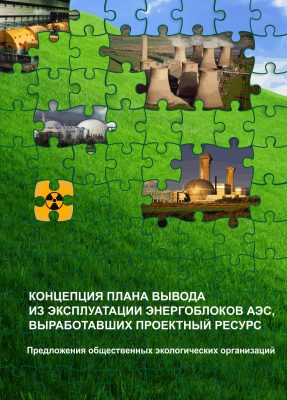7. Proposals for establishing regional RW repository in the North-West Russia
The Northwest of Russia faces the urgent necessity of establishing a regional RW repository.
The main challenge to the new facility will be the development and introduction of a system of advanced technological and organizational principles, and development of standard and reproducible approaches to the decommissioning problem.
Those RW management approaches which have proven their efficiency will be adjusted and used for other toxic waste.
As acknowledged by the IAEA, the most effective and safe solution of the RW final disposal is its burial in repositories at the depth not less than 300-500 m in the deep geological strata using the concept of multibarrier protection and mandatory solidification of LRW.
Geological formations of three types are suitable for the RW isolation from the biosphere:
- magmatic and metamorphic rocks;
- clays;
- rock salts.
RW repository option in the Baltic Russia
An option of a repository (controlled storage) for low- and medium-level waste is offered by Lenspetskombinat Radon (a waste-management company) located near Leningrad NPP, 1 km from the shoreline of the Gulf of Finland. By now the company, which runs the North-West storage of lowand medium-level waste, has accumulated more than 60000 m3 of radioactive waste kept in surface vaulted concrete storages.
In the opinion of A.A. Ignatov, LSK Radon Director, a possible disposal option can be offered by the Cambrian clay stratum under the company site. A trial borehole was drilled to the depth of 130 meters. In the opinion of Radon administration the drilling results confirm the feasibility of such an option; they are supported by the experts of SGN (France), AEAT (Great Britain), IVIE (Finland), SCK-CEN (Belgium).
It is known that the choice of a site can bring violent public protests. That is what happened in Gorleben (Germany), where the young people are actively protesting against the transportation of SNF from German NPPs to the repository made in the former salt mines. The public protests even resulted in casualties.
Дополнительные материалы
This topic focuses on the existing experience of long-term isolation of radioactive wastes from the environment in Russia
Lectures on this topic:
- 01. Operational RW and SNF of Russian VVER and RBMK reactors
- 02. Generation of solid radioactive waste (SRW)
- 03. Recycling of metallic radioactive waste
- 04. Spent nuclear fuel (SNF)
- 05. Radioactive waste produced at NPP decommissioning
- 06. Necessity of establishing a unified RW management system
- 07. Proposals for establishing regional RW repository in the North-West Russia
- 08. Legal provisions for RW management in Russia
- 09. Importance of using the international experience of RW and SNF management
- 10. European experience
TOPIC OF COURSE
- Topic 01. Current condition of nuclear energy
- Topic 02. Legislation in the US and in Russia
- Topic 03. International law in the sphere of decommissioning
- Topic 04. Role of the national regulators in the decommissioning process
- Topic 05. Possible approaches and scenarios of decommissioning
- Topic 06. Existing experience of decommissioning
- Topic 07. Strategy for handling radioactive waste (RW) and spent nuclear fuel (SNF) USA experience
- Topic 08. Strategy for handling RW and SNF Russian experience & other countries
- Topic 09. Social aspects of decommissioning
- Topic 10. International and inter-regional cooperation for safe decommissioning
